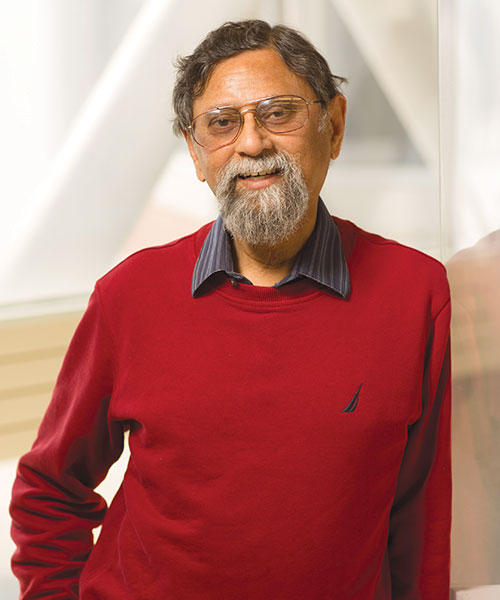 Improving the performance of organic, thin-film materials with perovskites to make solar energy more affordable and accessible
Improving the performance of organic, thin-film materials with perovskites to make solar energy more affordable and accessible
With the sun providing most forms of energy, whether indirectly or directly, it’s no wonder Vikram Dalal has spent more than 40 years working on better ways to access its energy.
But it’s the potential to provide the developing world with a more reliable source of energy that most inspires him.
Dalal, Whitney Professor of Electrical and Computer Engineering, says cost-effective solar energy could be a consistent source of electricity for parts to the world that typically rely on diesel generators or kerosene for energy.
“If we could accomplish this, it would mean clean drinking water, refrigeration to keep vaccines cold and electricity at night. All positive things that could drastically improve people’s way of life.”
And so, Dalal is working on a new class of solar cell. His research, which is currently funded by the National Science Foundation as well as the Iowa Energy Center, joins organic and perovskite solar cells with thin films of silicon.
Perovskites are a new system of materials that are increasingly efficient at converting solar energy into electricity. When perovskites are combined with thin-film silicon cells, which use amorphous silicon that is only a few hundred nanometers (a billionth of a meter) thick, or organic solar cells that are applied to a semi-transparent panel to absorb sunlight, there is potential for these cells to convert 20 percent of the light they absorb into electric energy.
That would match the efficiency of conventional solar panels, something that has yet to be done with newer technology. In addition, these cells would be more cost-effective, requiring less expensive material than the silicon crystals currently in use.
A major problem facing both organic and perovskite cells is that they degrade rapidly in performance due to environmental factors such as moisture and light exposure. Not much is known about the fundamental physics of why these cells degrade, so Dalal’s research is working to understand these phenomena. Over time, he will then design new materials and device structures that are much more stable with the goal of reaching a 20-year life for these cells.
“We have many challenges to overcome, both in improving efficiency and achieving much better stability. That’s why we’ve begun working with several disciplines, including chemistry and physics, and we are forming new partnerships, like that with Nazarbayev University, a new university in Kazakhstan’s capital city of Astana,” he says. Dalal adds that bringing together experts in organic and perovskite solar cell research will help advance the technology.
“Making solar energy better and cheaper will allow solar to penetrate the large-scale utility market as well as be widely utilized in developing countries. It’s something I’ve been working on for a long time, and these new cells could be the solution.”